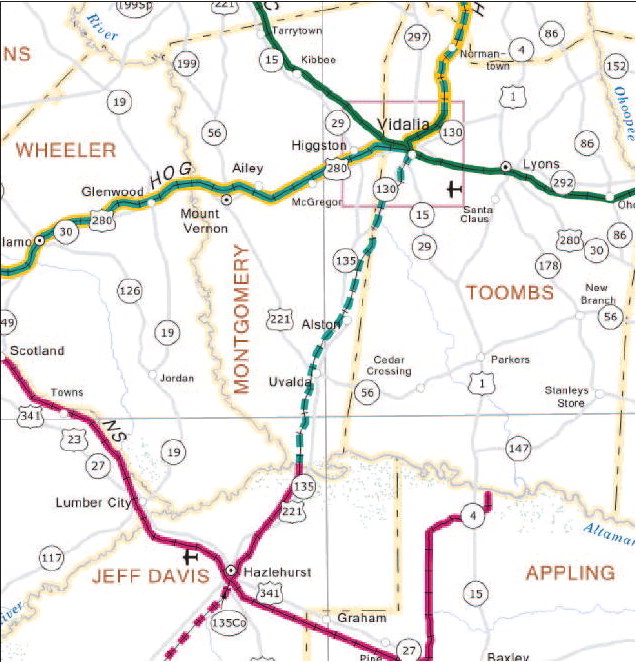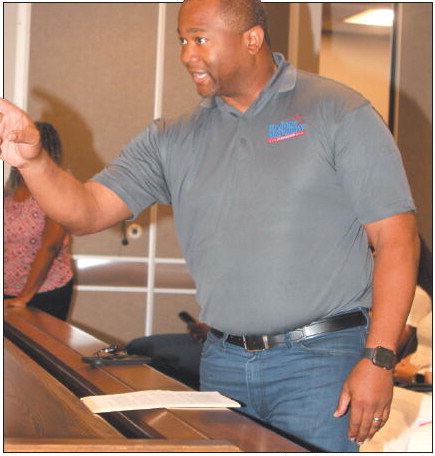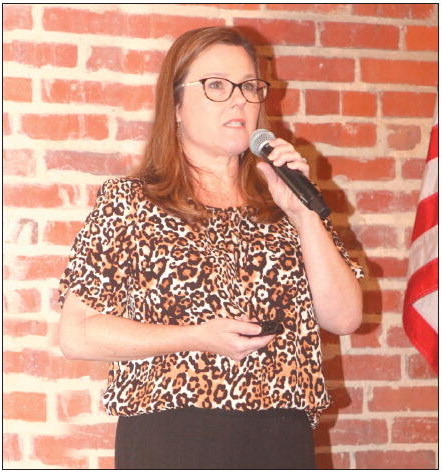GDOT State Rail Plan Outlines How Rural Railway Upgrades Can Benefit Communities


A railway restoration project is ongoing right outside of Vidalia as the Heart of Georgia (HOG) and the state Department of Transportation link up to finish the HOG – Midville Line. Portions of the line, from Swainsboro to Nunez and Nunez to Oak Park have already been completed. The current work will connect the line from Oak Park to Vidalia.
This track segment north of Vidalia has been out of service for years, but when the rehabilitation is complete, the work will reconnect two HOG lines, providing better service through an interchange with the Georgia Central Railroad and highway proximity to nearby Interstate 16. The project is part of the GDOT State Rail Plan which aims to upgrade the state’s commercial and passenger railway lines. In order to accomplish the goals and objectives set forth in the State Rail Plan, GDOT proposes a Rail Service and Investment Program, which is contingent on funding. Projects in the Rail Service and Investment Program seek to: Increase Rail's modal
share
Modernize Short
Line RR infrastructure
Extend the reach
of the Port of Savannah through Inland Ports
Alleviate blocked
crossings
Promote Passenger
Rail Projects opportunities Central RR and highway GDOT’s Rail Plan executive summary, 2021, notes that Georgia’s railroads are integral to the economy by keeping people and business moving. GDOT prepares a State Rail Plan every five years as required by the Federal Railroad Administration with a purpose of setting the vision for freight and passenger rail in the state for the next 20 years. The 2020 Georgia State Rail Plan provides updates on conditions that have changed and important short-term and long-term opportunities for investment including: e increasing de mand for passenger and freight rail services
Upgrades to the
GDOT-owned rail to ensure economic competitiveness Supporting opera tional improvements to maximize efficiency of the rail network and multimodal connections.
Since the last plan completed in 2015, the state has made significant investments in rail infrastructure including the opening of the Mason Mega Rail project at the Port of Savannah and has leveraged $18 million in CRISI grants to improve the short line railroad infrastructure. These investments in rail create a competitive edge for Georgia for growth in freight and logistics. Highlights of the 2020 Georgia State Rail Plan are:
Role of the rail sys –
tem in Georgia
BeneRAts to the state Rail system trends
and needs
Potential investments
and opportunities for passenger and freight rail
Funding sources
available for system investments The summary points out, “With upgraded infrastructure, Georgia’s small railroads could bring more benefits to local communities and the state’s economy. Georgia’s short line network – primarily in more rural parts of the state -presents opportunities to improve and expand.”
Improving these railroads can:
Boost rural economic
development by providing an inexpensive option for transportation of raw materials Reduce emissions
and wear and tear on Georgia’s roads and bridges by diverting freight from the highway network Types of Improvements: Upgrading track seg ments to be Heavy Axle Load (286,000 lb) compliant Upgrade rail, ties, bal last, joints, and/or bridges to meet FRA Class II track standards
Build or restore in dustrial customer sidings.
The summary states that unused rail corridors in Georgia provide opportunities for reactivation or repurposing. Unused rail corridors can be “railbanked,” have rail service restored, or formally abandoned.
“Railbanking” lines provide an opportunity for an “interim use” designation to be applied to the corridor. This allows for use as recreational trails while the rail corridor maintains its legal status as a transportation corridor. The Silver Comet Trail in Northwest Georgia owned by GDOT is a prime example of a railbanked corridor.
Unused rail corridors can provide opportunities for economic development by providing access and using available assets to restore service for industry or tourism. These improvements can be eligible for FRA grants, or state funding on state owned lines, according to the summary.
Abandoned rail lines have been through a process with the U.S. Surface Transportation Board that removed their legal status as a continuous corridor.” It is recommended that rail abandonment is avoided to leverage opportunities to reuse or restore unused rail corridors,” the summary stated.
Georgia DOT’s mission extends well beyond highways. The Department’s Office of Intermodal Programs:
Assists in the devel opment of 104 safe, wellmaintained public-use airports throughout the state; Promotes and sup ports 15 urban and 110 rural public transportation transit programs;
Helps to integrate
freight, passenger and commuter rail services on more than 5,000 miles of track in the state, including 540 miles it owns and leases to private operators for rural economic development; and Works with US Army
Corps of Engineers to maintain the navigability of ship channels serving ports in Savannah and Brunswick as well as throughout the 137 miles of Intracoastal Waterway in Georgia.
Greg Morris is the 12th District GDOT representative.
For more information, visit the Georgia Department of Transportation web site.






